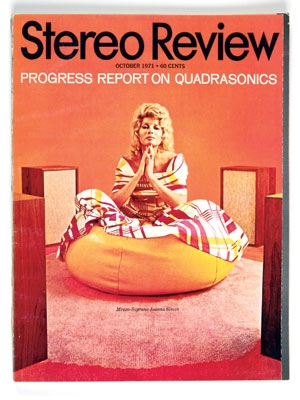50 Greatest A/V Innovations Page 3
| Click here to see a gallery of innovative products. |
12. MP3 and MP3 Players MP3 (MPEG-1 Layer III) is a perceptual-coding system for digital audio - similar in concept to Dolby Digital, WMA, AAC, DTS, and others - that allows drastic reductions in data rate with little or no loss of sound quality. MP3 was fully standardized in 1993, but it was the introduction late in that decade of player software for PCs (such as Winamp) and portable players with flash-memory storage that put the system in the spotlight. The small audio files that MP3 made possible were perfect for transmission over the Internet or storage on limited-capacity memory cards.
13. MPEG Video Compression The Motion Picture Experts Group is a standards body for digital audio and video compression systems, which come in different flavors to fit different requirements. MPEG-1 video, for example, is designed for relatively low-bandwidth applications, such as Video CD and the Internet. The more important video-coding systems, however, are MPEG-2 (1994), which is the foundation for DVD and HDTV, and the more recent and efficient MPEG-4 (1998), which is used for HD DVD, Blu-ray Disc, and, increasingly, HDTV transmission via satellite and cable. Without MPEG, we might still be watching VHS.
14. A/V Receivers Human beings went to the moon and back on less computing power than a modern A/V receiver brings to the table. The first models, from the 1980s, were less elaborate, all-analog affairs built around Dolby Pro Logic decoders, 4 or 5 amplifier channels, and simple composite-video switching. Just as now, though, they integrated all the processing and control functions necessary for surround-sound home theater into a single, economical package.
15. Stereo Receivers Before surround sound came 2-channel stereo; and receivers that integrated the functions of a stereo preamplifier, power amp, and tuner onto a single chassis were hugely important in popularizing component audio systems. The first - from companies like Harman Kardon, H.H. Scott, and Fisher - came to market at the beginning of the 1960s and used vacuum tubes rather than transistors.
16. Integrated Circuits One of the most important electronic innovations came out of Texas Instruments in 1958. The integrated circuit, or IC, put the elements of a solid-state circuit onto a single silicon wafer, allowing for incredible reductions in size and, ultimately, power consumption. Without ICs, digital audio would be nothing but a lab curiosity, and digital video - well, forget about it. Our world would be very different.
17. Stereo LPs The first stereo phonograph records were issued in 1958, a development that soon prompted this magazine's first name change. Stereo LPs, and the equipment to play them, enabled mass distribution of 2-channel stereophonic recordings, which could produce a much more lifelike sense of space than mono recordings. And it was an essential step on the road to surround sound.
18. Transistor Amplifiers Strictly speaking, the first transistor audio amplifiers became available slightly more than 50 years ago, in 1956 - but they were so bad, and so badly received, that we can skip over them. The true beginning of hi-fi's solid-state era came at the very end of the 1950s and the beginning of the 1960s, when reliable models with respectable sound quality became available. It's hard to imagine component audio systems achieving wide acceptance without transistor amplifiers, and modern surround-sound systems would likely never have emerged.





























































